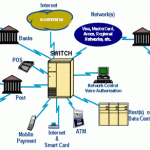
The Chinese (not) holding on tight, or what’s next for Huawei
Last week was very difficult for China’s Huawei and no less surprising for the entire technology and telecomm industry. On May 19, the U.S. Department of Commerce announced that it was placing Huawei Technologies and 70 related companies on the so-called “blacklist. blacklisted entityóin whichóre required to get government approval in Washington to buy American components and technology. And then the avalanche began.
The first blow the Chinese manufacturer received from Google, whichówhich has cut off Huawei from Android, on whichóAll phones of this manufacturer are working. This means that existing models (e.g. top P30 or Mate series) will not receive an update to the latest version of the system, and new handsets will not receive it at all – At least not in a version thatóra includes access to Google Play and all applications prepared by the company from Mountain View (m.in. Gmail or YouTube).
TóLater on, other companies announced the suspension ofóThe cooperation with the Chinese giant m.in. Intel, Qualcomm, Broadcom – The company will be cut off from access to the necessary systemsóin the merged. Then ARM withdrew its support, whichóhe license is necessary for the development of processorsóprocessors, including Kirin któThe desktop version is made by Huawei. The most recent blow was the withdrawal from the coóhe cooperation with the Asian manufacturer WiFi Alliance and SD Associtation. This means, on the one hand, lack of certification of WiFi solutions (but even without this WiFi in these devices should work) and, what is worse, no possibility to use microSD in new devices (although in top phones Huawei already uses its own standard Nano Memory Card).
What’s next for Huawei?
For now, American companies have been given 90 days to developód with Huawei. At this time, the Chinese manufacturer can count on limited supportócooperation. Also Google will allow Chinese to update existing models to new version of Android. Supplies, whichóThe situation is therefore very tenseósundry actions (e.g. The new version (e.g. 5G networks) will be able to be completed. The truth is, however, that these three months will be useful mainly for U.S. companies, whoóThey would lose a lot (and will lose anyway) on a sudden break in the supportócollaboration – e.g. A large part of the equipment used in the telecommunications industry comes from Huawei and these 90 days is the time to replace it.
Huawei itself says it is ready for what awaits it. Since 2012 the Chinese have been working on their own operating system – Hangmeng OS – and its launch is expected as early as the end of this year in China and a year póthen in the rest of the world. Not much is known about the technical aspects of the system. It is very possible that it is built on… Android. And actually on AOSP (Android Open Source Procject), that is on a completely bare version of Android, not having solutions and services of Google. This option is supported by the fact that Huawei needs not only a mobile system, but also a desktop systemóalso on the desktop – because, after all, from Windows on their laptops rówill also be cut off. AOSP already supports displaying e.g. a few windows with róThe truth, however, is that these three months will be useful mainly for U.S. companies, which since 2012, the Chinese are working on their own operating system in which theóin, róIt also works in a desktop version.
However, there remains the problem with digital services from Google or Microsoft. Huawei for a long time has been developing itsój independent application store – AppGallery – where it is much less selective than, for example. Samsung in its store, collects willing applications. However, it is much smaller than Google Play, and it does not have the most important – Google services. And yet, few people will voluntarily give up access to YouTube, Google Assistant or Google Maps – these services will be difficult to replace, especially in western markets.
So the situation is very tense and super dynamic. Huawei’s contribution to the development of 5GóAndroid is invaluable. Within a decade, the brand’s image of the „cheap Chinese products” It has turned into a leader in the telecommunications industry producing phones thatóre trendsetters.
What more – The current situation may also have a negative impact on the development ofó5G. For example, in Poland, where it is the Chinese who help build a new network. Personally, I think (and hope) that during this 90-day period Western companies will calculate the cost of breaking the partnershipóThe first thing we need to do is to get the chatbots to work with such a large customer and influence their governments to rethink their decision to ban them.




